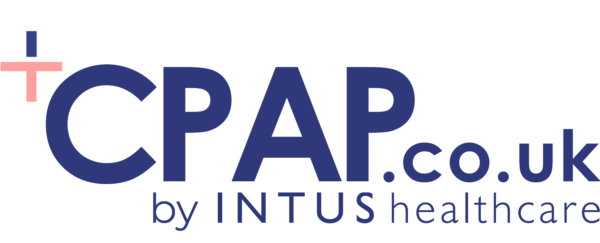Last updated on July 6th, 2023 at 03:34 pm

Sleep apnoea is a disorder which left untreated can increase the risk of serious health problems. Without treatment it can increase the risk of heart disease, stroke and type 2 diabetes. Obstructive sleep apnoea (OSA) is the most common form of this sleep disorder and is also strongly linked to the condition atrial fibrillation (A-fib). Both conditions share a few of the same risk factors including age, weight and diabetes.
Atrial fibrillation is a medical condition in which chaotic electric signals cause the top chambers of the heart quiver or twitch. This leads to an irregular heartbeat which can sometimes be fast. It is estimated over 33 million people worldwide are affected by A-fib and that half of these will also have obstructive sleep apnoea. Those who have A-fib are five times more likely to suffer a stroke, so understanding the risk factors, including OSA, is vital.
The Link Between the Two Conditions
People with obstructive sleep apnoea experience a narrowing of the upper airways as they sleep. This causes a reduction in oxygen levels which prompts the brain to awaken the body for air. Depending on the severity of an individual’s OSA this can happen up to thirty times every hour, resulting in significant sleep deprivation.
It is the result of these frequent interruptions to sleep and the affects it can have on the body which links the sleep disorder to atrial fibrillation (A-fib).
Although the precise nature of the relationship between the two conditions is still being studied, untreated OSA can result in hypertension and diabetes. These in turn are risk factors in developing A-fib. Every sudden awakening due to OSA also results in a rise in blood pressure to address the drop in oxygen levels and rise in carbon dioxide levels in the blood.
Over time this can result in chronic high blood pressure and further physiological changes such as the thickening of the heart’s walls due to the increased pressure it is placed under. All these additional stresses placed on the body may be contributing to the development of A-fib.
Treatment Options
Studies indicate the presence of untreated OSA can impair the treatment of A-fib. One example suggests those with both sleep apnoea and A-fib might not respond as effectively to medication which helps control their heart-rate compared to if they only had A-fib.
Therefore, diagnosing and treating OSA can help make treatment of A-fib more effective, while treating both conditions can lead to a healthier outlook overall.
Diagnoses is key in treating OSA. It is estimated there are 296 million people worldwide who suffer with this sleep disorder, yet 85% remain unaware they have the condition. Once diagnosed OSA can be treated and the symptoms reduced. This means uninterrupted sleep without the frequent waking of the body for air which is linked to changes in the body that may contribute to the development of A-fib.
As weight can be a significant risk factor in OSA, lifestyle changes will often be recommended. This can include a healthier diet, exercise, reduced alcohol consumption and quitting smoking. One of the leading treatment options for OSA is continuous positive airway pressure (CPAP) therapy. This involves a device which supplies pressurized air through a mask worn while sleeping. This helps to keep the upper airways open and prevents the body being frequently awoken for air.
A-fib can often be treated with a catheter ablation, where the catheter is passed through the blood vessels and in to the left atrium. The muscle around the trouble point causing the arrhythmia is then targeted with heat from radio-frequency ablation or through freezing from cryoablation.
The aim is to use one of these methods to create scar tissue in the affected area and prevent the abnormal electric signals which generates the A-fib.
However, for people with both conditions, a catheter ablation seems to be more effective when the OSA is also being treated using CPAP therapy. Those whose OSA has been diagnosed — but are not having it treated — can see higher recurrence levels of A-fib after a catheter ablation compared to those who do not have OSA.
CPAP therapy can take a bit of getting used to, but persistence is key to reducing the debilitating impact of OSA. Sleep apnoea sufferers are estimated to be 4 times higher risk of developing A-fib, emphasising the importance of diagnosis and treatment. It is therefore important for people with A-fib to also see if they have OSA, as treating both conditions can help overall health.
To order the At-Home Sleep Test click here
To shop for the highest-quality selection of CPAP devices click here


